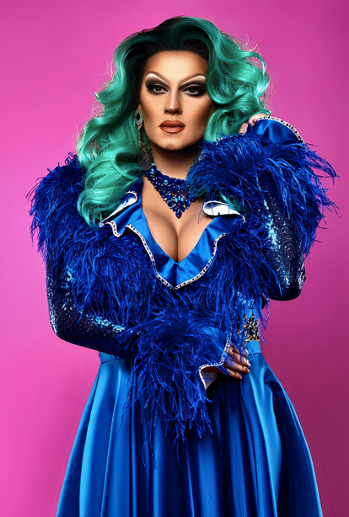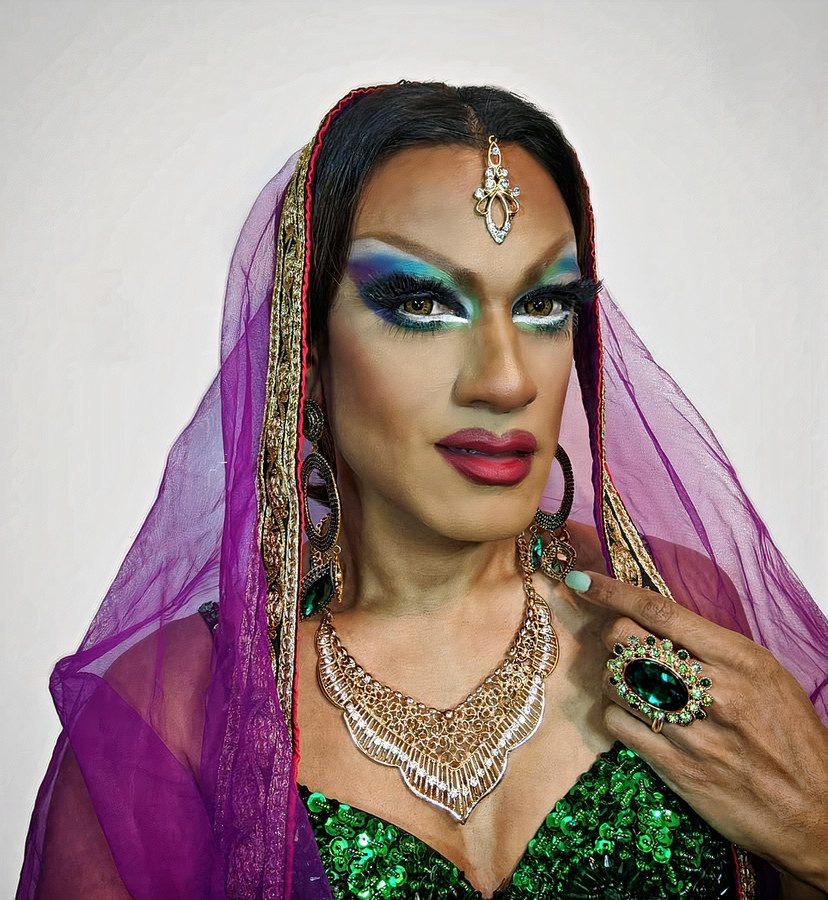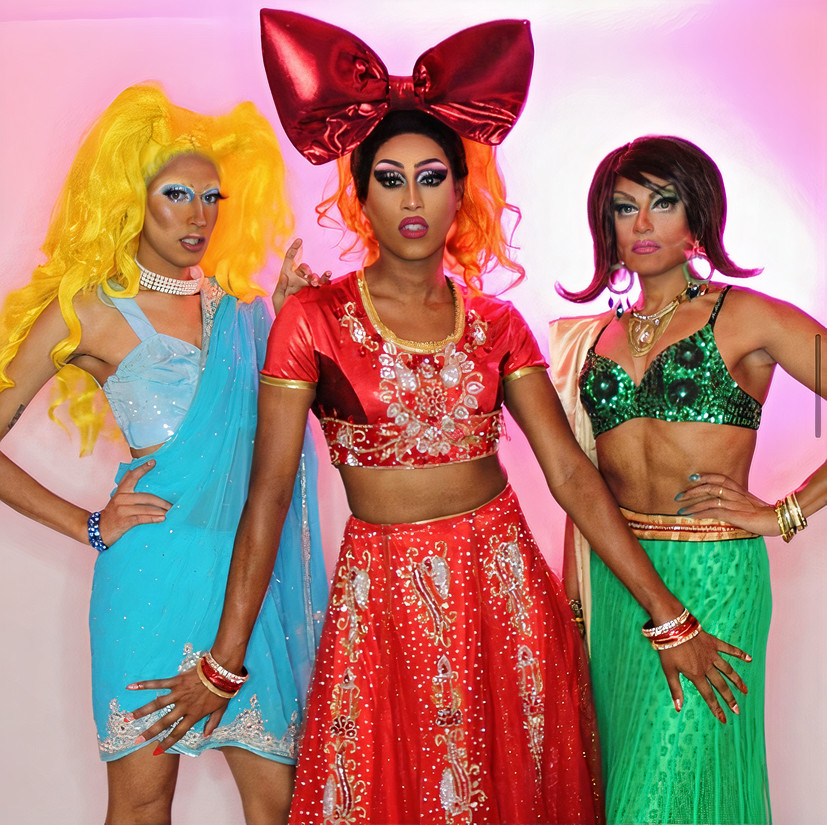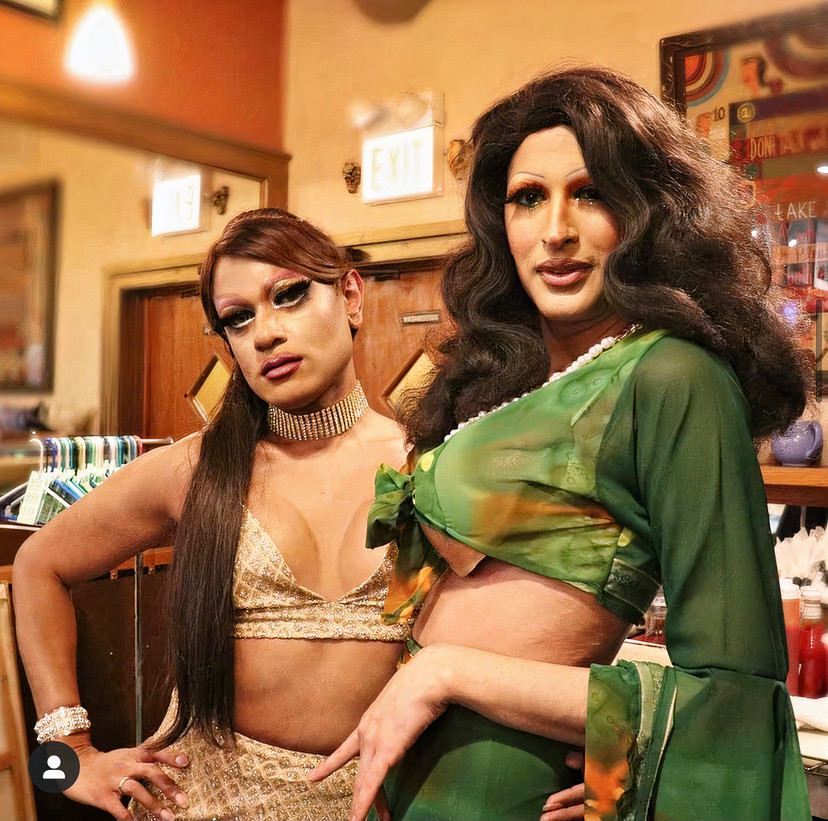
There are over 200 drag queens on our screens – but why are only 1.2% of them south Asian?
Amidst the front room reigned by infectious energy and ubiquitous echoes of laughter, a bowl of strawberries is passed around the sofa. Gradually, as the lights slowly start to dim, so does the bowl of fruit’s speed – something more exciting is brewing now. The clock has struck 7 pm, and for Brighton University’s students, it means only one thing: it’s time for RuPaul.
Amongst the crowd sits the lean figure of Adam, applying contour with one hand while getting ready to tweet with the other. In his world, this is escapism, while in his parents’, a nightmare.
As Adam leans over the sofa with interest and his face reflecting the applied Fenty beauty, his friend Rosie murmurs to him, “You’ll be there one day!” “Hmmm”, he murmurs back with doubt; “The chances of that are slim.”
Adam is another south Asian who is faced with the difficulty of taking that next step to the stage. Out of 67 top half performing queens on the show, the number of Asian queens stands at a subtle 5.
For a statistic that’s been swept under the carpet, it’s pretty damning. Receiving plaudits for its showbiz factor that has the power of getting anyone on their feet, drag is definitely on a monumental rise. Amidst all of this success, however, the lack of inclusion of south Asians is rarely discussed. Does success in this industry really only entail talent and chance? Or is there a more profound, unrevealed secret behind the scenes?

“My family disowned me,” is what Adam reveals when he’s asked about his family’s reaction to his drag dream. “Being gay is a huge no-no in an Asian household anyhow, but to impersonate a woman as a man… that’s a death wish. It was like a double whammy for them that they couldn’t stomach. But I was happy, and that’s all that mattered. I just left my home and never looked back.”
When Adam came out to his family in 2019, they utterly rejected it. Due to the strong religious and cultural beliefs, this is no surprise that south Asian communities are vehemently opposed to homosexuality. Yet, Adam says it was really his passion for drag that sent his relationships to an all-time low. “Growing up in an Asian household, you’re never taught about expression. We have an abundance of colourful dresses in our culture made for women, and subconsciously, I think that that’s where my love for dressing up as a woman started. What was made for women was made for me” Adam explains. “A big part of the drag community is gay, and sometimes when I try to go to castings, they think my background will hinder any success, which honestly, is quite upsetting. That negative stigma around drag and queerness in the Asian community ultimately plays a significant role compared to my white counterparts.”
Although it’s been two years since Adam has distanced himself from his family, it’s still apparent that agencies are marginalising him for stereotypes beyond his control. While his friend Billy starred in many university drag competitions, Adam has tried countless theatre projects and castings, all to no avail. Perhaps a lack of inspiration and pioneers, Adam believes, may be another reason why south Asian people feel distant to drag.
“Look at most of the people who star in these shows; they all talk about being inspired by fellow countrymen or the community they were raised in. The fact that I can’t name any influential Indian drag queens from the top of my head makes you think. Am I made for this industry, and will I ever be accepted? It sure does play on your mind.” Adam recalls how he met the first aspiring Pakistani drag performer at a casting show. “We were talking about how we could be that change in society. When the agents asked us who inspired us to do drag, everyone credited western performers. It was then that that fire for us to be that change was ignited. We almost felt embarrassed for our reason for doing drag; it was sheer means of expression. While others did it because they were inspired by the industry, we simply didn’t have anyone in the industry. Only ourselves.”
Adam’s frustrations reveal a significant conundrum in the entertainment field – a tremendously westernised standard that needs to be acknowledged. As long as you’re from a conventional white background, the chances of success are much higher. Research from PRIDE, found that “Only six black queens even crossed the average marker of 569k followers.” So much for praising drag for its inclusivity! In fact, in RuPaul’s 12-year history, “there have only ever been two queens of South Asian descent or heritage.” That is two out of 166, and 1.2%, which is simply unacceptable and one of the many reasons aspiring south Asians don’t believe drag is in their cards. Is there a way that the drag community, as a whole, could bring this exclusion to an end and inspire the next generation of south Asian performers instead? Given there’s barely any south Asian drag acts, exposure must come from within.

As the show neared its end, Adam introduces Stephanie, his 23-year-old agent and a Brighton University student union member. Being a member comes with significant responsibilities. Even she has tried her utmost to break down barriers for ethnic minorities to succeed in drag. Firmly believing that the field’s moguls could do more to help ethnic minorities, she mentions that certain days are made to celebrate diversity within drag.
“It’s all about exposure in this field. The interest in drag is evolving, and since it’s not as established as other performatives, exposure truly is key. Other performatives have certain days to celebrate diversity, and drag can do more. South Asians already feel ostracised by their families; the last thing they need is to feel something akin to that within the industry. Look at Bollywood, it’s a huge south Asian franchise that has reached unprecedented success levels due to its togetherness. Drag culture should follow suit. Instagram and TikTok are optimal platforms for drag performers to showcase themselves. It would be great if the industry could promote some of these pages, not for sympathy, but for the brilliant talent that goes unnoticed.”
Social media is beneficial in helping gain exposure because it can help mellow that stigma and resistance certain groups feel towards drag. The more our feeds subject us to it, the more normalised it’ll become. Implementing a normalisation of drag in certain demographics is the first crucial step. And while this is important, Stephanie still highlights that the weight that parental support carries in south Asian communities isn’t to be underestimated.
“If only Adam’s parents could see how talented he is, I think it would help them revaluate their stance on drag. Asian parents are so fixated on maintaining a good image and what extended family has to say that they forget to put a child’s interest at heart. It’s either education or nothing. Drag is an education, and it’s a way of life. Imagine how many south Asian performers worldwide are destined for the stage but are put off because of shaming their families’ reputation. It’s disheartening.”

While in mid-conversation, Adam bolts in with a vibrant saree, a traditional Asian dress. As he starts strutting down the hall of his university accommodation, effortlessly, like a faithful regular at Paris fashion week, Stephanie chuckles and says, “he’s like this all the time.”
“I’ve been his agent for a while, and he’s a real live wire. It’s about making him realise how good he is. I can only do that with his family’s support. He is destined for stardom.”
This situation is all too common – how many south Asians are victims of the industry and their family’s lack of belief? This constant battle of miscommunication ultimately leads to massive resistance from all parties involved.
As we can see, a significant impetus lies in family beliefs. Therefore, gaining some insight from a south Asian mother seems relevant. Given this subject’s local level of taboo, you can class this as a moment in history.
Tania is a gay Indian and mother to a son who recently received death threats when posts of him in a dress circulated the web. She confirms that being born into a south Asian family affects a drag queen’s ability to come out and affirm themself. She also adheres to the fact that authoritative figures in the industry are playing on this insecurity, and that to their benefit. “The family is not the main issue”, she says. “Our countries are depicted as ones of a third world that have nor morals or freedom. It’s these companies’ way of shifting the blame, and it’s an easy way out. They don’t realise that they’re the catalyst for change, and for change to happen, they need to do more. As parents, we are just pictured as the bad guys. And while I agree that the old generation way of parenting is strict, it’s outdated. It’s a new generation now.”
Tania refutes any claims of subconscious racism, instead suggesting a lack of education amongst the involved parties. “If we all work together, we can push this idea of resistance to one side. I would love and support my son if he chose to do drag. It would be a match made in heaven!”
If there ever was a time to break stigma and resistance for south Asians in drag, that time is now. Family values have a considerable part to play indeed. Yet, it’s up to the industry and the companies to bridge this massive gap. With the significant consumption and use of social media, the idea of ‘resistance’ can be eradicated. Drag should be a culture that is celebrated regardless of colour, sex or gender. Instead of pointing fingers at each other for all of eternity, we should communicate and educate. With Gen Z and Millennials on the rise to becoming parents, we can no longer blame families. We are being raised in a modern era where everyone is open to acceptance. Perhaps with south Asian queens such as Priyanka taking plaudits on RuPaul’s drag race, could we finally see an influx of south Asian queens?
